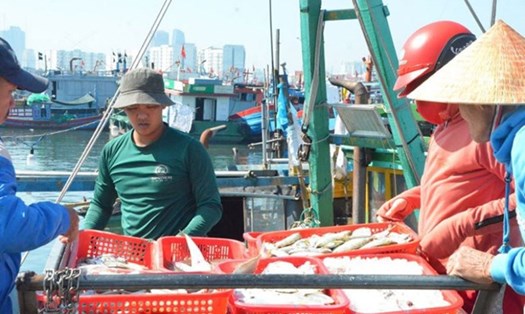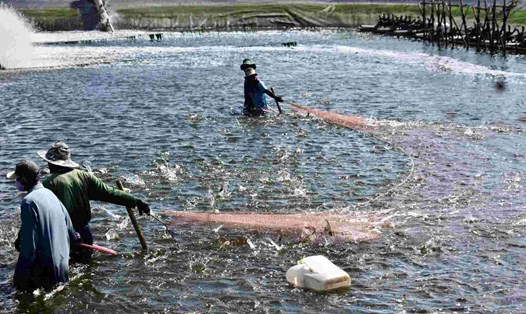Still challenging
In 2024, the seafood industry aims to achieve an export turnover of nearly 10 billion USD, an increase of 3% compared to 2023. Statistics from the Vietnam Association of Seafood Exporters and Producers (VASEP) show that in the first 9 months of 2024 alone, seafood exports reached 7.2 billion USD, an increase of 9% over the same period in 2023. Thus, Vietnam's seafood export target in 2024 is completely achievable.
However, due to the impact of storm No. 3 (Yagi), the seafood export target in 2024 has become more difficult. According to the Ministry of Agriculture and Rural Development, incomplete statistics show that about 19,956 hectares of aquaculture water surface and 4,246 cages were damaged and swept away, causing serious damage to both infrastructure and aquaculture.
In addition, issues related to the origin of goods, transportation costs, certification of marine farming or rising fuel costs have been posing challenges to the seafood industry in general, and seafood businesses in particular.
Talking to Lao Dong reporter, Mr. Le Quy Viet - Thanh Hoa Seafood Import-Export Company - commented that one of the current difficulties of seafood enterprises is the origin of goods and seafood.
"In Vietnam, most fishing units are small-scale, and their vessels and equipment do not have full licenses. This makes it almost impossible to provide origin information to exporters. At the same time, seafood products grown at sea are still stuck because they have not been granted licenses or certificates for farming at sea.
Regarding the export market to the US and Europe, there are still two main difficulties: IUU fishing and unstable transportation costs. Difficulties are also due to Vietnam's fishing regulations and high raw material costs..." - Mr. Viet said.
Businesses need to be proactive, adaptive and diversify markets.
Deputy Minister of Agriculture and Rural Development Phung Duc Tien said that to achieve the export target of nearly 10 billion USD this year, seafood enterprises must adapt and adjust their operating plans to suit the market context. Enterprises need to diversify export markets to avoid dependence on one market; at the same time, increase exports to new markets, aiming to expand and promote the development of the domestic market.
To achieve the 2024 target and maintain the growth momentum until the end of the year, in addition to the State's support to remove obstacles in regulations and licenses, Mr. Truong Dinh Hoe - General Secretary of the Vietnam Association of Seafood Exporters and Producers (VASEP) - said that businesses need to make more efforts in raising and exporting seafood.
"Businesses need to pay attention to some barriers in seafood exports such as anti-dumping and anti-subsidy taxes in the US. When applied to major shrimp exporting countries, the level of competition becomes more intense between countries. This causes shrimp exports to be affected or accelerated depending on the tax level applied to Vietnam.
In addition, the unusual weather factors of 2024 may negatively impact fish and shrimp farming during this period, affecting raw materials. In particular, problems related to fisheries exploitation, illegal, unreported and unregulated fishing (IUU), and slow resource protection may also impact raw materials for processing," Mr. Hoe shared.
According to Mr. Hoe, the main markets, especially the US market, will recover demand for year-end consumption, the Chinese market after the economic stimulus package will increase demand for Tet, and Japan will also be stable.










